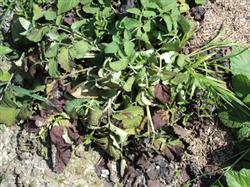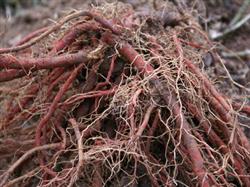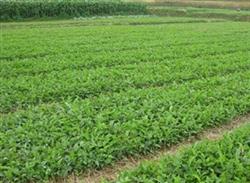How to prevent and cure root rot of Salvia miltiorrhiza?

How to prevent and cure root rot of Salvia miltiorrhiza? Please introduce Salvia miltiorrhiza root rot: first, harmful symptoms: Salvia miltiorrhiza root rot occurs in the high temperature and rainy season, harming the roots of the plant. At the initial stage, only a few roots or part of the underground rhizome became ill first, and gradually expanded to the whole root system. After the root was killed, the wet rot occurred, and the outer skin was black. in the early stage of the disease, some branches and leaves died, and in serious cases, the whole plant died. Salvia miltiorrhiza producing areas have varying degrees of harm, resulting in certain losses. Second, prevention and control methods 1, the implementation of rotation: due to soil bacteria, continuous cropping of Salvia miltiorrhiza has early onset, serious disease and rapid spread. It is best to rotate with Gramineae crops for 3 ~ 5 years to reduce the number of pathogens and the incidence of disease. 2. Healthy seed retention: select disease-resistant varieties, select strong and disease-free roots, and do not leave seeds in the diseased fields to reduce diseases. 3. Strengthen field management: reasonable fertilization, more organic fertilizer, more phosphorus fertilizer and potassium fertilizer, timely elimination of stagnant water in rainy season, pay attention to loose soil, and improve plant disease resistance. 4. Chemical control: 1 kg / mu 70% dimethicone wettable powder or 50% carbendazim wettable powder mixed with 3 kg of fine soil, sprinkled into the hole when planting, has a certain control effect; cuttings and Reed head disinfection, soak the cuttings and Reed head with 1000 times solution of 50% methylobuxine wettable powder or 70% methyl topiramate wettable powder for 3 minutes, then soak the cuttings and Reed head for 3 minutes after drying. During the growing period, fungicides were irrigated around the roots of diseased plants at the initial stage of Salvia miltiorrhiza disease, which could control the spread of the disease. the commonly used pesticides were 50% carbendazim wettable powder or 50% prednisone wettable powder 500 times, or 96% copper sulfate 1000 times, or 3% agricultural resistance 120 water agent 100 times 150 times, once every 10 to 15 days, for 3 times in a row. Click to get more planting techniques of Salvia miltiorrhiza
- Prev

How to control root-knot nematode disease of Salvia miltiorrhiza?
How to control root-knot nematode disease of Salvia miltiorrhiza? How is salvia miltiorrhiza root-knot nematode disease symptomatic? The control methods of root-knot nematode disease of Salvia miltiorrhiza can be referred to as follows: first, harm symptoms the disease harms the roots of Salvia miltiorrhiza. Nodular galls were found on the main root, lateral root and fibrous root, the main root and lateral root became thinner, and the fibrous root became more. On the gall.
- Next

How to raise seedlings and propagate Salvia miltiorrhiza?
How to raise seedlings and propagate Salvia miltiorrhiza? Please introduce several propagation methods of Salvia miltiorrhiza, such as seed seedling method, plant division method, root division method and cutting method, etc. The root-splitting method is mainly used in production, and this method can greatly increase the output. (1) split root method: select robust, disease-free insect, thick 0.
Related
- Fuxing push coffee new agricultural production and marketing class: lack of small-scale processing plants
- Jujube rice field leisure farm deep ploughing Yilan for five years to create a space for organic food and play
- Nongyu Farm-A trial of organic papaya for brave women with advanced technology
- Four points for attention in the prevention and control of diseases and insect pests of edible fungi
- How to add nutrient solution to Edible Fungi
- Is there any good way to control edible fungus mites?
- Open Inoculation Technology of Edible Fungi
- Is there any clever way to use fertilizer for edible fungus in winter?
- What agents are used to kill the pathogens of edible fungi in the mushroom shed?
- Rapid drying of Edible Fungi

